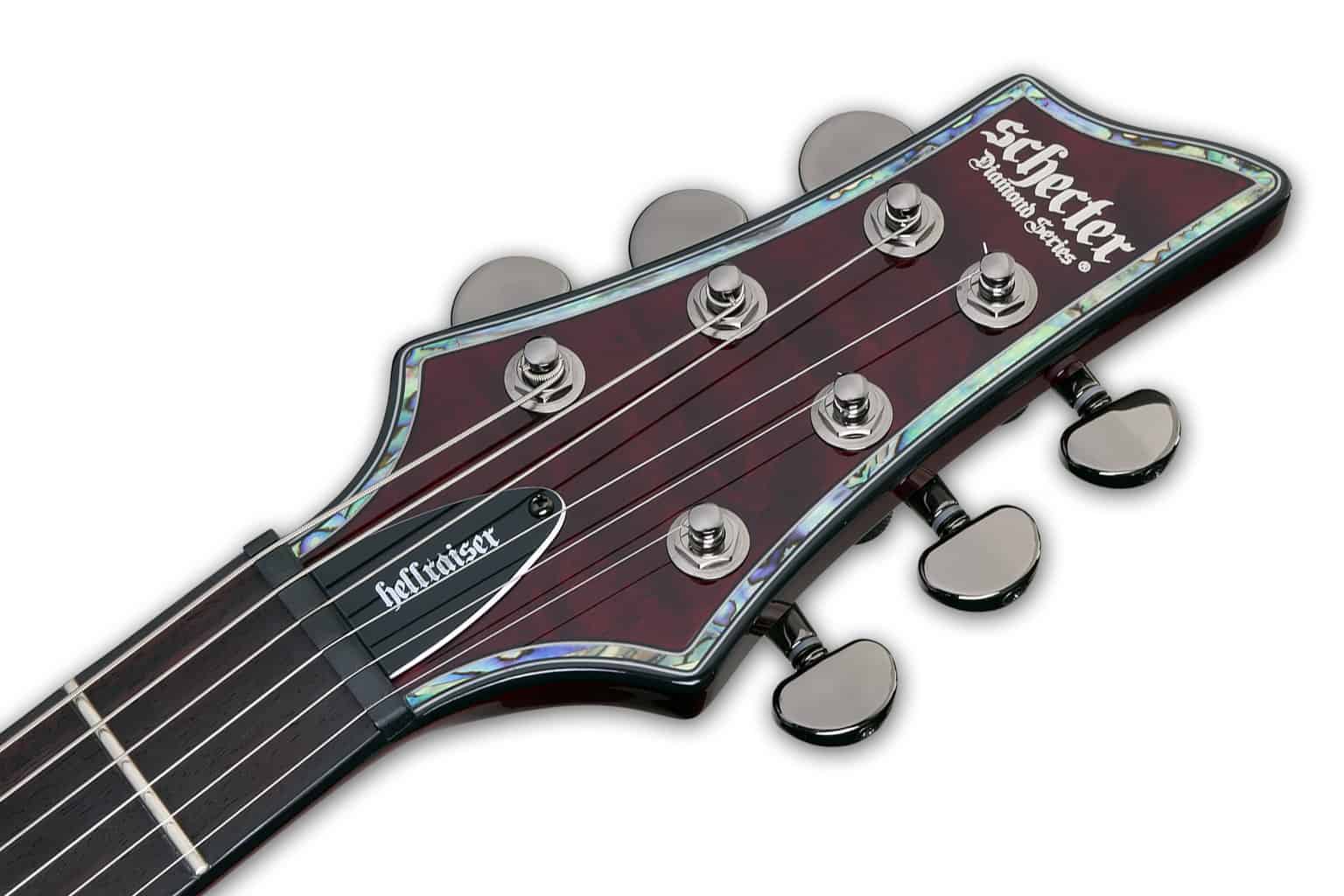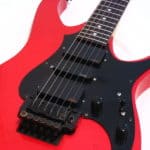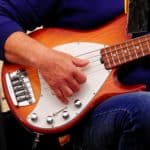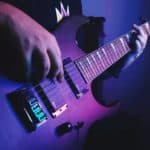Schecter makes amazing guitars geared towards the metal segment. Their price to quality ratio is on point, and you can’t really go wrong with them.
Their catalog of instruments is very broad, though, and the options might look overwhelming. We are here to help you out.
Undoubtedly, 2 of their most popular lines are the Blackjack and Hellraiser. These 2 are incredible metal machines, clearly designed not to compete against each other but to cater to slightly different audience tastes.
If you just want to know what are the main differences between these 2 guitar models, here there is a short answer:
The main differences between the Schecter Blackjack and the Hellraiser are that the Blackjack is more expensive, has passive Lundgren pickups and an ebony fretboard. The Hellraiser is cheaper, has active EMG pickups and a rosewood fingerboard. For the price of a Blackjack, you can get a Hellraiser FR.
If you would like to go more in-depth on the subject, stick around with us.
We will talk about the main features of both these guitars, then, we will put them side by side and point out their main differences.
Finally, we will tell you which one we think is better for different players and playstyles.
Are you ready?
Let’s get started!
Schecter Blackjack main features

The Blackjack line comes in different flavours. For the comparative intent of this article, I will stick to the C-1 version.
The Blackjack C-1 is a superstrat with a fixed bridge, locking tuners, mahogany neck and body, ebony fretboard, and passive Seymour Duncan pickups.
That’s pretty much all you need to know about it. If you’re looking for a metal machine capable of delivering classic tones, you can’t go wrong with it.
If you want to dive deeper into what makes it special, here are their main specs:
| Spec | Blackjack C-1 |
| Body material | Mahogany |
| Bridge | TonePros T3BT TOM w/ String Thru Body |
| Neck material | 3-piece mahogany |
| Neck Shape | Thin “C” |
| Fretboard material | Ebony |
| Pickups | Lundgren M6 (Passive) |
| Coil-splitting | Yes |
| Tuners | Schecter Locking |
| Made in | South Korea |
Schecter Hellraiser main features

The Hellraiser C-1 is the Blackjack’s more extreme brother.
It is another amazing metal machine that will be a great addition to any modern player’s arsenal.
It is a superstrat with a fixed bridge, locking tuners, mahogany neck and body, rosewood fretboard, and active EMG pickups.
The Hellraiser goes up to eleven with its active pickups, with gain to quench the thirst of even the more demanding players.
If you want to know what the Hellraiser’s complete spec sheet looks like, here it is:
| Spec | Hellraiser C-1 |
| Body material | Mahogany |
| Bridge | TonePros T3BT TOM w/ String Thru Body |
| Neck material | 3-piece mahogany |
| Neck Shape | Thin “C” |
| Fretboard material | Rosewood |
| Pickups | Bridge: EMG 81TW (Active)Neck: EMG 89R (Active) |
| Coil-splitting | Yes |
| Tuners | Schecter Locking |
| Made in | South Korea |
Main differences between the Schecter Blackjack and the Hellraiser
These 2 Schecter models are pretty similar. They even share the same body shape.
However, there are 3 main differences between them:
- The Hellraiser C-1 has active EMG pickups while the Blackjack C-1 has pasive Lundgren ones
- The Hellraiser C-1 has a rosewood fretboard while the Blackjack C-1 has an ebony one
- The Hellraiser C-1 is cheaper than the Blackjack C-1
Here are their spec sheets put side to side so you can check it out for yourself:
| Spec | Hellraiser C-1 | Blackjack C-1 |
| Body material | Mahogany | Mahogany |
| Bridge | TonePros T3BT TOM w/ String Thru Body | TonePros T3BT TOM w/ String Thru Body |
| Neck material | 3-piece mahogany | 3-piece mahogany |
| Neck Shape | Thin “C” | Thin “C” |
| Fretboard material | Rosewood | Ebony |
| Pickups | Bridge: EMG 81TW (Active)Neck: EMG 89R (Active) | Lundgren M6 (Passive) |
| Coil-splitting | Yes | Yes |
| Tuners | Schecter Locking | Schecter Locking |
| Made in | South Korea | South Korea |
| Price | Cheaper | More expensive |
Are these differences groundbreaking? Well, for many players they might be. Especially the pickups.
Active pickups have a more in-your-face, with higher outputs, and, in my opinion, fewer dynamics.
Passive pickups have a lower output, but enough to shred, and tend to be a little more dynamic.
As for the differences in fretboard wood. Rosewood tends to be a more balanced option when talking about its tone. Ebony fretboards usually sound a bit more bright and have a tighter low end.
Finally, about the pricing difference, it’s noteworthy that the Blackjack is more expensive. For the price of a Blackjack C-1, you could get a Hellraiser C-1 with a Floyd Rose. If a floating bridge sounds like an upgrade to you, that could be a dealbreaker.
In the end, it’s all a matter of choice, and you should go for what your ears and fingers tell you about these subtleties.
Which one should you choose?
Here in GearAficionado, we don’t like choosing the gear for you. Getting a new guitar is a very personal experience that you should transit on your own.
We always try to give you the most objective information possible and try to remark which we think are the main points that you should consider.
You should try to get the opportunity to try out these guitars side by side and choose which one works out best for you.
Playing the actual guitar you’re about to buy will be an incredibly more informative action than reading a blog article or watching a YouTube video.
However, if you want to know which one we think would be better for different kinds of players, here are our insights into the matter:
- If you are on a budget, look for a Hellraiser
- If you prefer passive pickups, try out a Schecter Blackjack
- If you want the extra gain of active pickups, go for a Hellraiser
- If you like ebony fretboards, chek out the Blackjack
- If you prefer rosewood fingerboards, give the Hellraiser a try
- If a floating bridge doesn’t sound like an upgrade to you, stick with the Blackjack
- If a Floyd Rose bridge is something you would prefer, for the price of a Blackjack C-1 you could get a Hellraiser C-1 FR

Hello there, my name is Ramiro and I’ve been playing guitar for almost 20 years. I’m obsessed with everything gear-related and I thought it might be worth sharing it. From guitars, pedals, amps, and synths to studio gear and production tips, I hope you find what I post here useful, and I’ll try my best to keep it entertaining also.





